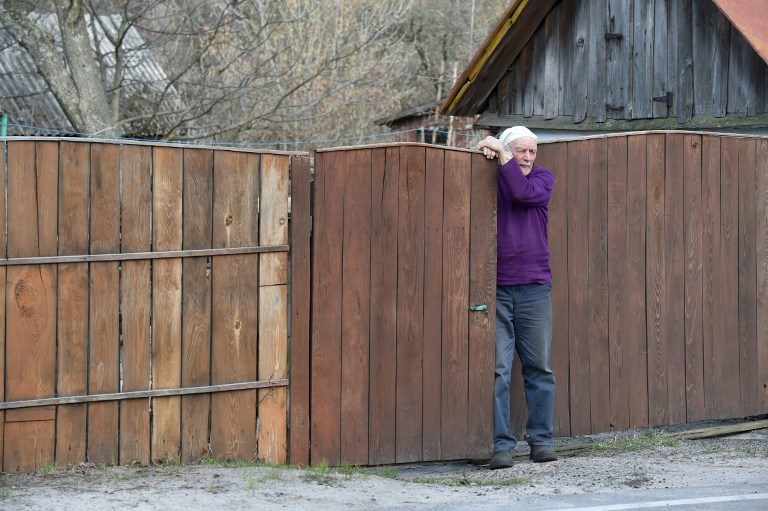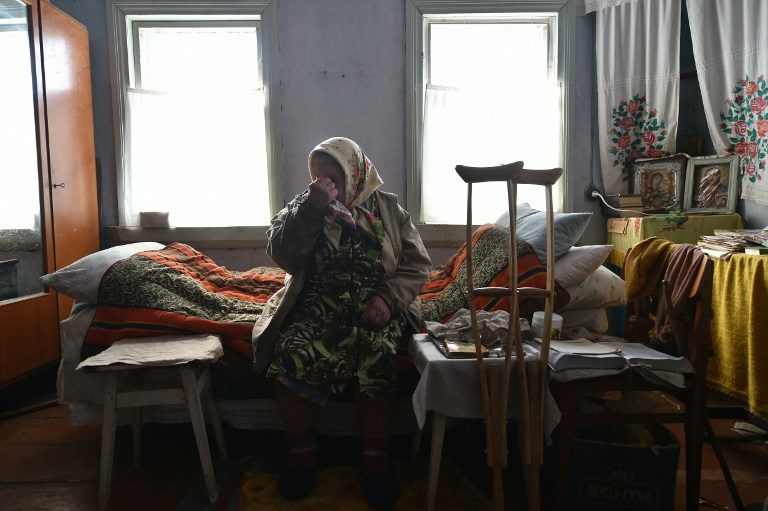SUMMARY
This is AI generated summarization, which may have errors. For context, always refer to the full article.

CHERNOBYL, Ukraine – Defying radioactive contamination and a government evacuation order, Yevgeny Markevich returned to his beloved Chernobyl shortly after it suffered the world’s worst nuclear accident 30 years ago this week.
The sturdy 78-year-old former teacher is among 158 people still living in the 30 kilometer (19 mile) exclusion zone around the Ukrainian nuclear power plant where reactor number 4 exploded on April 26, 1986.
The area remains contaminated by radiation and is deemed uninhabitable by Ukrainian authorities.
“I only want to live in Chernobyl,” said Markevich, whose family moved there in 1945 when he was 8.
“I can’t explain why people want to live here. Are they following their hearts? Are they nostalgic? Who knows.”
The move to Chernobyl, where the soil was once rich and fertile, helped Markevich’s family survive famine in the years immediately after the war, he said.
“Here we could plant crops and harvest our own food. I have never wanted to leave,” he said.
The nuclear disaster, which the Soviet authorities initially sought to cover up, was directly responsible for the deaths of more than 30 people although a 2005 United Nations report estimated that radiation could eventually claim up to 4,000 lives.
On the day of the accident, a Saturday, Markevich was teaching a class at a local high school, not suspecting that the explosion nearby would forever transform the town and the lives of its people.
“We knew something had happened because buses and military vehicles were driving toward Pripyat,” he said, referring to the nuclear workers’ town located 3 kilometers from the Chernobyl power plant.
“Nobody told us anything. There was only silence.”
Markevich, along with almost 116,000 other people living in the area, was forced to evacuate in 1986. But he wanted to return home immediately and began creating excuses to re-enter the exclusion zone.
“Once I came here pretending I was a sailor, another time I said I was a police officer overseeing oil deliveries,” he said.
During one of these incursions into the exclusion zone, Markevich met the head of the radiation monitoring station and asked him for a job.
He was hired on the spot and has not left the area since, boasting that he has never been ill despite years of eating vegetables grown in contaminated soil.
“There is an element of risk,” he conceded.

‘Crying and screaming’
Maria Urupa, who is in her early 80s, also calls the exclusion zone home but is less enthusiastic about her living environment.
Like most of the “samosely,” or self-returners as inhabitants of the exclusion zone are known, she lives in a dilapidated wooden house in spartan conditions.
These illegal residents, whose average age is 75, never accepted the forced evacuation of the zone surrounding the now shuttered power plant.
In the aftermath of the explosion, which spewed out clouds of poisonous radiation that spread across Europe, more than 1,000 people returned to live in the officially sealed-off area.
Urupa survives off vegetables she grows in her garden as well as the food supplies brought by visitors.
Other residents venture outside the exclusion zone to the town of Ivankiv, where the nearest market is located.
Urupa says she considered hiding in her basement with her husband to avoid the initial evacuation in 1986, but their plan was not to be.
“It was sad. There was crying and screaming,” she said.
After spending two months in a displaced persons camp, Urupa opted to return to the area “in a group of 6 people, walking through the forest like guerrilla fighters.”
Another inhabitant of the exclusion zone, Valentina Kukharenko, 77, said she regrets that members of her family have to show their identity papers to visit her and are limited to 3-day visits to prevent radiation exposure.
“They say radiation levels are high. Maybe radiation affects outsiders, people who have never come here. But what are old people like us afraid of?” she said.
Kukharenko said that she feels like a “stranger” outside the exclusion zone and rarely ventures outside the area.
“I’m not a nationalist but I love my native land,” she said.
“I hope children’s laughter resounds again here, even if it takes years.”
A baby girl named Maria was born in the exclusion zone in 1999 to a settler couple, the first child to be born in the disaster-hit area.
Born suffering from anemia, Maria left Chernobyl with her family just a year after her birth. Her whereabouts today are unknown. – Laetitia Peron, AFP / Rappler.com
Add a comment
How does this make you feel?
There are no comments yet. Add your comment to start the conversation.